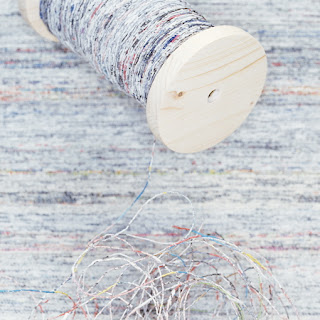
It can require some doing to find some attractive art work to hang on your walls. Original art is very expensive, and inexpensive prints and posters can look chintzy. It's one of those Martha Stewart-type decorating rules that framed personal photos should not go on the walls but should sit on the furniture, and I agree it's a rule that upgrades one's décor, because family photos almost never look really artistic.
But your walls needn't remain bare until you can afford original artwork. One way to go is to expand your ideas as to what constitutes art, because you can hang up anything you like so long as you find it interesting and attractive. The question to ask yourself is, simply, "Do I really enjoy looking at this?" In my front entrance way, I've hung up a wooden checkerboard that my father (a very talented and award-winning woodworker) made for me. A friend of mine has an antique post office window hanging over the couch in her living room, and I've heard of people mounting a large tree branch over their dining room table (they decorate it with lights at Christmas), or mounting and framing collections of small items such as buttons, or making collages out of personal momentoes.
Another option is to make your own art, and don't think that you have to be an accomplished painter, sketch artist, or photographer for this to be an option. If you can make anything beautiful that can conceivably be hung on the wall, go for it. I have a little stained glass butterfly hanging over the doorway in my bathroom, and I'm always surprised by the number of my guests who come out of the bathroom and immediately comment on it. In my front hallway, across from the checkerboard, I have hanging a framed counted cross-stitch of a magnolia that I made. It has approximately 29,000 stitches in it and took me two and a half years to stitch, so I had it professionally framed and hung it by the front door so I could see it every damn day of my life and think, "That's right. TWENTY-NINE THOUSAND STITCHES."
People have been framing needlework such as embroidery and needlepoint for many years, and now crocheting and knitting are getting into the picture. I ran across the picture above on the net a few weeks ago, and was very impressed. Finally, someone found a contemporary use for doilies! The collection looked so sharp I made a mental note to myself to find some comparable shots of framed knitting and write a post about it.

There were fewer examples of framed knitting on the net. Knitting tends to be less purely decorative than doilies are, so it might take a little more imagination to produce a decorative knitting piece, but it can be done. The blogger at
Crafty Yuppie made this piece for an art show at work (and had a bit of time convincing her co-workers that knitting could be art), and I thought it quite lovely.

I found this piece, which is about contrasting the colour and texture of the knitting, in the
My Mountain Studio shop on Art Fire, and it's striking.
This is a new direction to explore, and I'm sure most knitters could make a beautiful collection of knitted pieces that would suit their homes and become the admiration of all their house guests. You might even have swatches on hand you could hang up by the end of today, or say, a lace scarf that you can't finish because you ran out of yarn, that would be a perfect candidate for framing.
One important factor in knitted art's success is that the pieces should be framed to a professional standard, because a good quality framing job really adds to the aesthetic viability of a piece. I can't do framing myself and professional framing is one of my few extravagances in decorating, but so worth it. Especially when it comes to a piece of needlework that has TWENTY-NINE THOUSAND STITCHES in it.


















